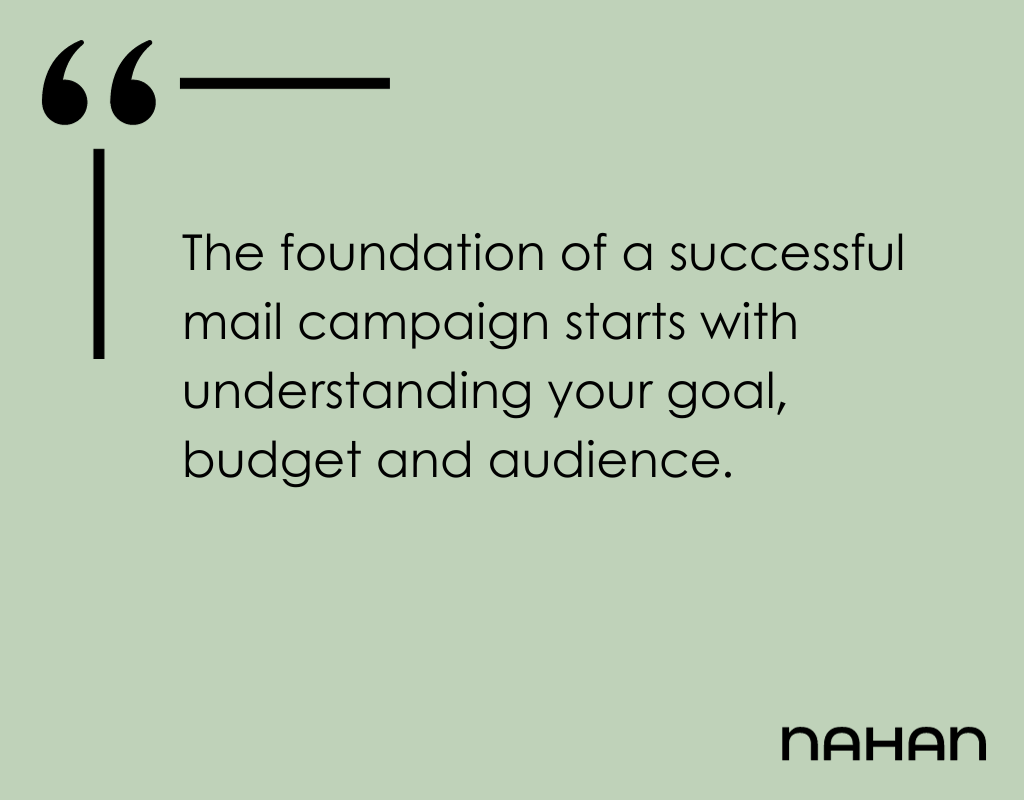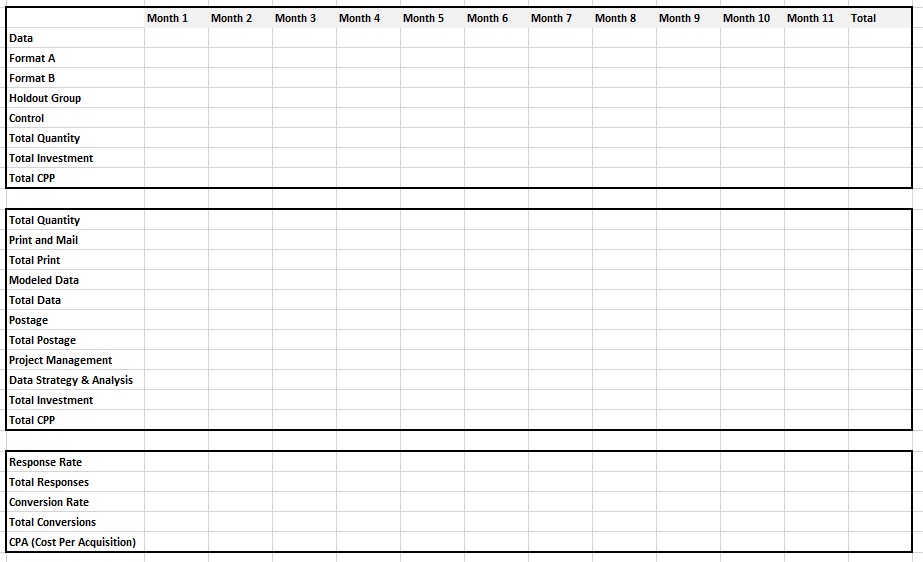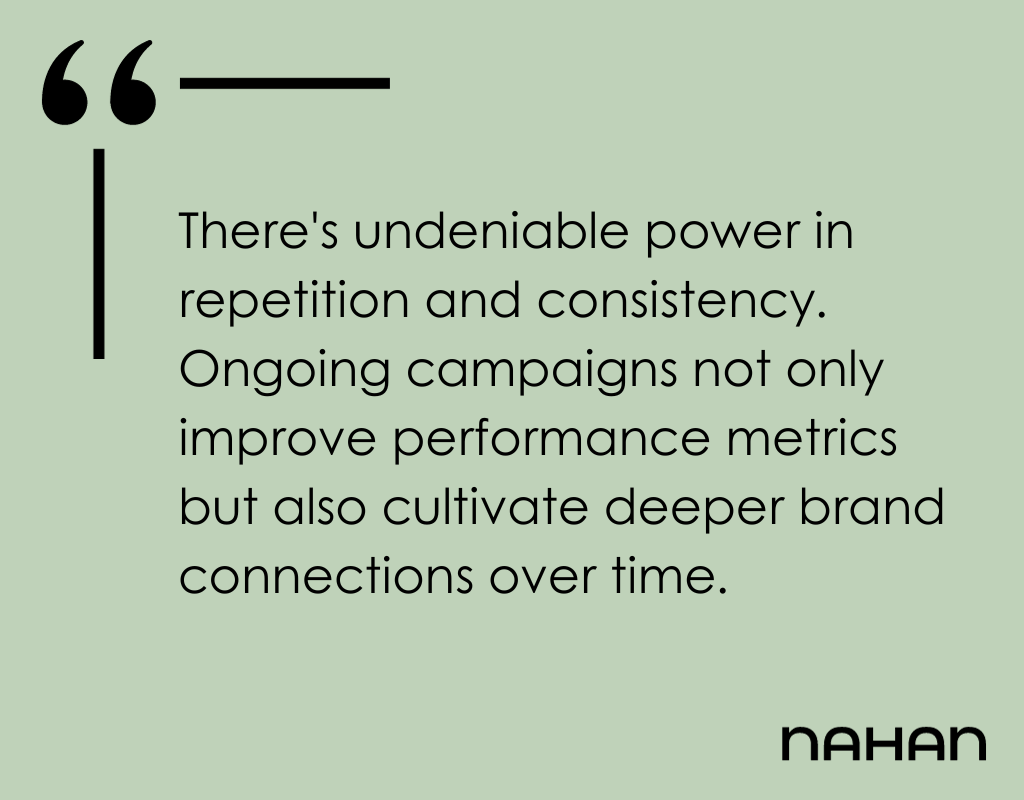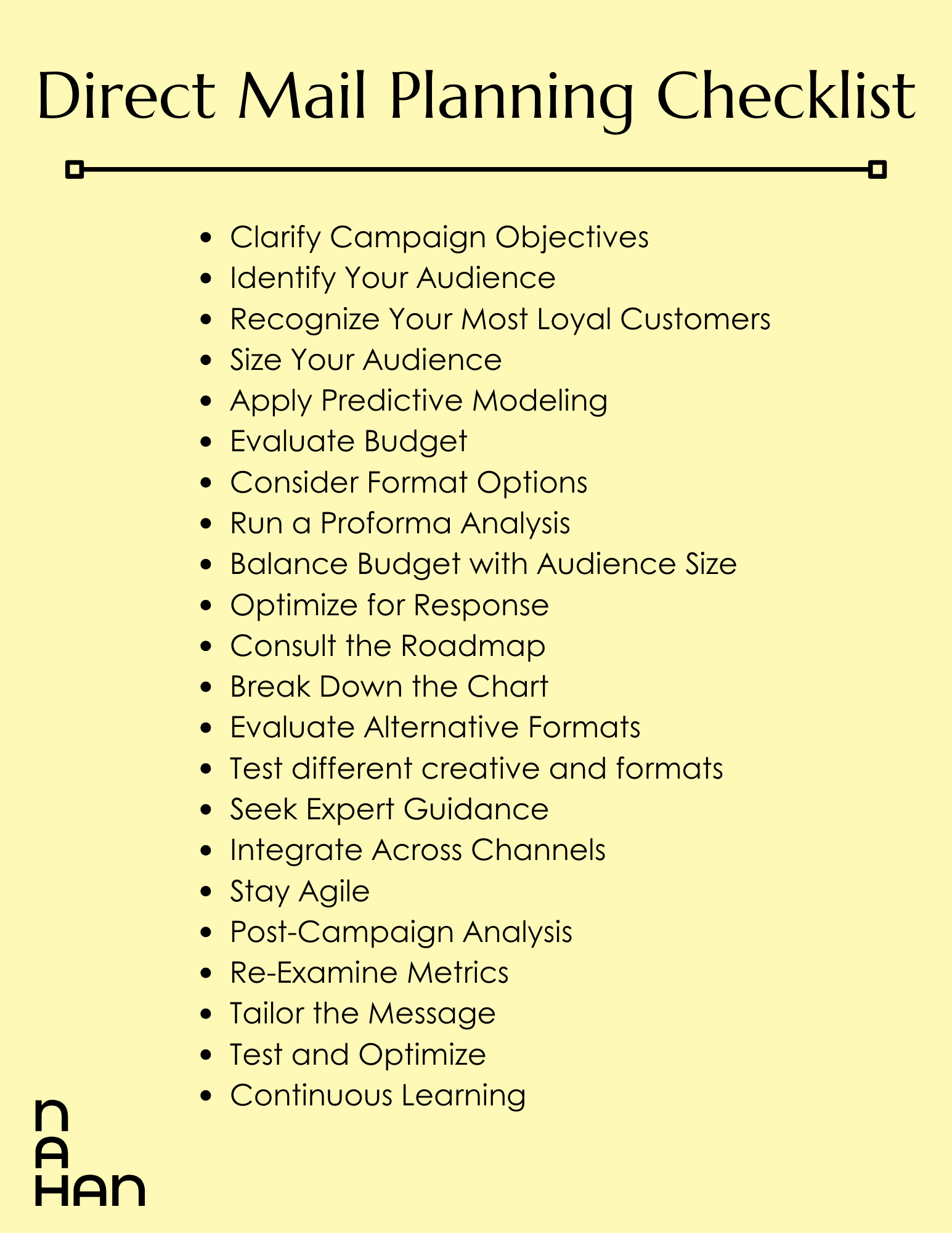Decoding Direct Mail Plans: A Checklist for Marketers
Here at Nahan, our Strategy and Account Services Teams know just how vital a meticulously crafted direct mail plan is to the success of any campaign. Trust us, it’s not just about sending mail, it’s a delicate balance of art and data science. A well-thought-out plan guides your campaign from start to finish, providing the flexibility for real-time adjustments and mitigating unexpected challenges.
To help you navigate this journey, we’ve developed a comprehensive checklist. Think of it as your roadmap to a successful direct mail campaign, ensuring each dollar spent translates into real, meaningful engagement.
Determining Your Target Audience
The first and perhaps most crucial step in building a successful direct mail campaign is recognizing your target audience. By identifying and sizing your audience initially, you set the stage for a campaign aligned with your specific goals – be it maximizing lead quantity, focusing on high-quality conversions, or even building brand awareness.
In our experience, assumptions can be risky. You may think you know your customer demographics, but reality often tells a different story. It’s worth taking the time to understand who your most loyal and profitable customers are. We believe in letting the data do the “talking.”
Are they the same as your broader audience?
The attributes of your loyal customer base can serve as a blueprint for identifying your acquisition audience.
Leveraging modern predictive modeling techniques provides deep insights into which data attributes within a prospect or customer universe are indicative of response. These insights can inform you which messaging, creative and offers may resonate with your audience. Models rank the target audience, enabling marketers to target just those deemed likely to respond, thus enabling a more efficient budget allocation and minimizing unnecessary expenditures.
Nowadays, with the cost of marketing continuing to rise, predictive analytics are a must for targeting.
Checklist
- Clarify Campaign Objectives: Before you dive into audience identification, be clear about your campaign’s goals. Are you looking to generate a large number of leads, focus on high-quality conversions, or increase brand awareness? Your objectives will influence the rest of your planning steps.
- Identify Your Audience: Through comprehensive market research, understand who you’re targeting. Go beyond assumptions and investigate whether your perceived audience matches your actual customer base. It may be useful to build a customer profile by appending demographic data to your customer file to gain customer insights.
- Recognize Your Most Loyal Customers: Identify your most loyal and profitable customers and see how they align with your broader audience. Use this information to prioritize your audience.
- Size Your Audience: Based on your clarified objectives, budget, modeling results, and audience insights, evaluate the size and scope of your target audience. Assess the feasibility of reaching them within your budget constraints.
- Apply Predictive Modeling: Make use of predictive analytics to rank your audience to determine those most likely to engage with your campaign. This focused approach allows for a more effective and efficient budget allocation.
Setting Budget and Audience Size

Whether your budget is modest or extensive, aligning it strategically with your audience size and campaign goals is vital.
Sometimes, achieving your goals might mean considering more economical creative formats. While high-response formats are often tempting, they aren’t always necessary depending on your campaign objectives.
For example, if your primary goal is brand awareness and product trial, a postcard may suffice. However, if conversions are what you’re after, investing in a #10 envelope with a reply card could yield a better ROI. We have also found that certain formats may be best for certain industries.
Running a proforma analysis of projected results is an excellent way to gauge ROI and assess how different mail formats align with your objectives. This can inform whether your budget is optimally allocated for achieving your campaign goals.
Checklist
- Evaluate Budget: Take stock of your financial resources to determine a feasible budget that aligns with your campaign objectives.
- Consider Format Options: Depending on your goals, weigh the costs and potential ROI of various mail formats. If brand awareness is the goal, a more economical format may be sufficient. For higher conversions, consider investing in more engaging formats.
- Run a Proforma Analysis: Conduct a proforma to evaluate the potential ROI for different mailing formats and target audiences. This will help align your budgeting decisions with your campaign goals.
- Balance Budget with Audience Size: Once you’ve considered all the variables, strategically allocate resources to maximize the reach and impact of your campaign within your budget.
- Optimize for Response: Use modeling insights to focus resources on those more likely to engage, but always in alignment with your overarching campaign goals.
The Roadmap: Understanding Direct Mail Plans and Pricing Charts

The landscape of direct mail can be both broad and intricate. One of the first steps is understanding what each line in your pricing chart means. Whether you’re looking at formats, postage types, the number of touches, mail types, or cost considerations, these components all feed into your overall direct mail strategy. Understanding these can provide not only cost savings but also contribute to a more targeted and effective campaign.
Sometimes, particularly when budgets are tight, it’s worth considering alternative, more economical formats. While the highest response rates are always appealing, they often come at a higher cost.
Testing needs to be part of every plan wherever possible. This is how we learn and apply that learning to improve results
Collaboration is key. Working with expert agency partners ensures you’re making data-informed decisions, better positioning your brand for success. And hey, we’re always here to help!
Checklist:
- Consult the Roadmap: Keep your mail plan and pricing chart within arm’s reach. It’s your guiding star.
- Break Down the Chart: Make sure you understand all elements in your pricing chart; formats, postage type, number of touches, mail types, and associated costs.
- Evaluate Alternative Formats: Don’t blindly chase higher response rates. Weigh the pros and cons of different mail formats in the context of your campaign goals.
- Test different creative and formats. Include a certain amount of risk in your planning to allow for testing. This is how you learn and improve performance.
- Run a Proforma: This financial statement can provide insights into potential ROI and help you make more informed decisions.
- Seek Expert Guidance: Don’t go it alone. Partnering with a seasoned agency can provide invaluable expertise and strategic direction.
Understanding the Customer Lifecycle and Crafting Tailored Campaigns for Each Stage
The customer lifecycle isn’t a straight path; it’s a complex journey with twists and turns. Knowing how to navigate these intricacies is crucial.
At Nahan, we often emphasize that to create the most impactful direct mail plans, you need to understand and adapt to your customer’s lifecycle.
Direct mail can be highly effective on its own, but its potency increases exponentially when integrated with other channels like digital advertising or social media, all carrying a cohesive message. Omnichannel works particularly well when we target digital campaigns to the very same people we are reaching via direct mail, taking advantage of the original predictive analytics used to target them.
Remember, a good mail plan is as fluid as it is solid.
Sure, planning is key, but agility in execution can be your differentiator. You can’t always predict how your customers will react, which is why your plan should be adjustable. If new insights arise during the campaign, be prepared to pivot for more desirable outcomes.
Don’t overlook post-campaign analysis. Knowing what succeeded, what didn’t, and why is indispensable for refining future mail plans. This is a continuous learning process that sets the stage for your next campaign.
Let’s talk metrics. The last touchpoint might get all the glory, but we know that DM plays a vital role in customer conversion, even if it’s not the final interaction. So dig deeper. Analyze how many people who received a DM piece actually engage and whether they are likely to become more valuable customers in the long run.
Checklist:
- Acknowledge Lifecycle Complexity: Understand that the customer lifecycle is multi-dimensional, requiring a nuanced approach.
- Integrate Across Channels: Consider all touchpoints in your customer’s journey. Ensure your DM campaign complements other channels for a unified brand message. Same offer and messaging.
- Stay Agile: Be prepared to adjust your campaign strategy as you gather more data and insights during its execution.
- Post-Campaign Analysis: Don’t move on to the next campaign without evaluating what worked and what didn’t in the last one.
- Re-Examine Metrics: Challenge the “last touch attribution” model. Dig deeper into how DM contributes to customer engagement and long-term value.
- Partner with Experts: Collaborate with specialized agencies that can bring expertise in direct mail and integrated marketing strategies.
The Power of Persistence: Advantages of Ongoing Multi-Mailing Campaigns
Within our team, we often find ourselves echoing a vital principle:

An ongoing direct mail campaign allows you the freedom to experiment, refine, and most importantly, learn about your audience. Think of it as a long-term relationship rather than a one-off encounter. You wouldn’t propose on the first date, would you? In the same vein, ongoing touchpoints afford you multiple opportunities to build credibility and foster trust.
Don’t forget, data is your best ally here. Frequent interactions with your customers offer more data points, allowing for nuanced insights that can be used for continuous refinement. This is particularly important when considering other channels your customers may encounter. A multi-mailing strategy can seamlessly integrate with your other marketing channels to deliver a cohesive and impactful message. This synergy often leads to a snowball effect, enhancing the impact of each channel and making your marketing spend more efficient.
Remember, the insights you gain from one campaign can (and should) be used to fine-tune your next one. Always be analyzing and adapting. The lifecycle of your customer base isn’t static, and neither should your approach be.
Checklist:
- Understand the Customer Journey: Map out key touchpoints and opportunities to make a meaningful connection.
- Tailor the Message: Different stages of the customer lifecycle warrant different messaging. Make each touchpoint relevant.
- Test and Optimize: Don’t rest on your laurels. Regularly revisit your performance metrics and adapt based on real-world feedback.
- Integrate with Other Channels: Make your direct mail campaigns part of a larger, unified marketing strategy. Cohesion amplifies impact.
- Continuous Learning: View each campaign as a learning opportunity for the next. Capitalize on what works and learn from what doesn’t.
Final Thoughts
Direct mail campaigns that are executed thoughtfully and iteratively can offer unparalleled ROI and engagement.
Our team of experts at Nahan is committed to guiding you through this labyrinth, ensuring that your messaging resonates deeply with your targeted audience.
Contact us today to craft a strategy tailored to your audience, optimizing your ROI for sustainable success.



